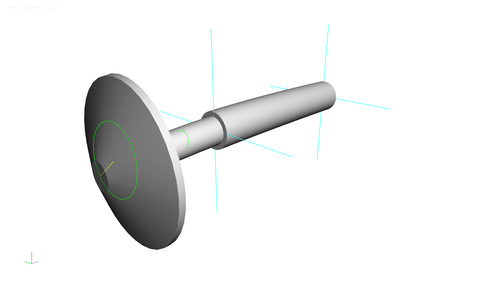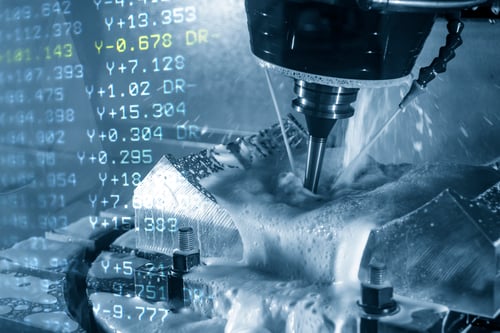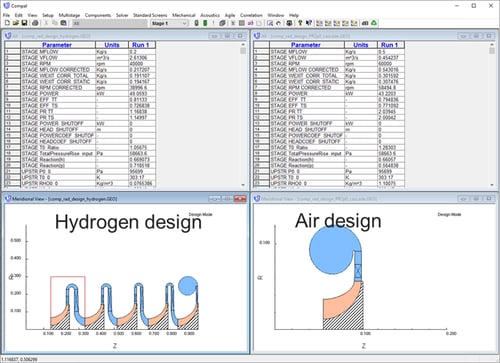Dyrobes™
Rotordynamics Software
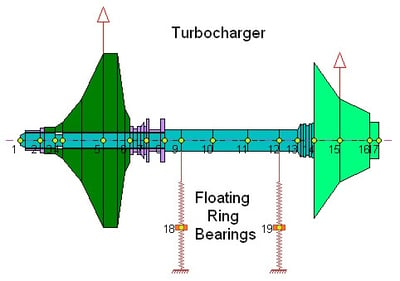 Dyrobes™ is a complete rotordynamics software tool that is powerful and versatile, yet easy to learn. Developed for the working engineer, Dyrobes offers complete rotordynamic analysis, vibration analysis, bearing performance and balancing calculations based in Finite Element Analysis. The software combines an intuitive Windows-based interface with sophisticated modeling and analysis capabilities that can satisfy the most demanding industry requirements.
Dyrobes™ is a complete rotordynamics software tool that is powerful and versatile, yet easy to learn. Developed for the working engineer, Dyrobes offers complete rotordynamic analysis, vibration analysis, bearing performance and balancing calculations based in Finite Element Analysis. The software combines an intuitive Windows-based interface with sophisticated modeling and analysis capabilities that can satisfy the most demanding industry requirements.

Software Highlights
-
Recent new developments allow for the use of pre-set templates in both COMPAL® and AxCent® products. The templates that have been created include the first order design inputs and the critical outputs that should be used in compressor optimization. This will streamline the optimization process by removing the need to select from the hundreds of options that are available. In addition, the duplicate feature allows for simple “copy/paste” of these templates, or any set of parameters and/or outputs, which will save time in setting up a multi-stage optimization. The addition of these features will streamline the optimization process, making optimization more “pushbutton” than ever before.
-
TurboOPT II enables the designer to achieve an optimal design quickly, based on: lowest cost, lightest weight, highest performance, longest life, or any combination of these. TurboOPT ll provides optimization across every module in the Agile Engineering Design System with a flexible user interface, and performance maps for each variable.
Optimization workflows can be set up in minutes using turbomachinery specific parameters, where achieving this same type of optimization using generic (non-turbomachinery specific) software would be tedious and prone to errors. Users also have the option of using the built-in optimization algorithms or choosing from any of the well-known third party optimization systems.
Recent new developments allow for the use of pre-set templates in both COMPAL® and AxCent® products. The templates that have been created include the first order design inputs and the critical outputs that should be used in compressor optimization. This will streamline the optimization process by removing the need to select from the hundreds of options that are available. In addition, the duplicate feature allows for simple “copy/paste” of these templates, or any set of parameters and/or outputs, which will save time in setting up a multi-stage optimization. The addition of these features will streamline the optimization process, making optimization more “pushbutton” than ever before.
TurboOPT II enables the designer to achieve an optimal design quickly, based on: lowest cost, lightest weight, highest performance, longest life, or any combination of these. TurboOPT ll provides optimization across every module in the Agile Engineering Design System with a flexible user interface, and performance maps for each variable.
Optimization workflows can be set up in minutes using turbomachinery specific parameters, where achieving this same type of optimization using generic (non-turbomachinery specific) software would be tedious and prone to errors. Users also have the option of using the built-in optimization algorithms or choosing from any of the well-known third party optimization systems.
Blade Geometry
AxCent easily handles the most complex blade geometry. A partial list of blade design features include:
- Blade stacking of 2D cross sections
- Blade restaggering around an arbitrary axis
- Bowed blading defined by hub-to-shroud bow profiles
- Bowed or sculpted element with arbitrary number of mid-span sections
- Variable tip clearance on either end of the blade
- Flow cuts and radial trims
- Swept leading/trailing edges
- Multiple, offset, and independent splitter blades
- Irregular blade/splitter configurations for noise reduction
Other design features include:
- Parameterized volute geometry generation
- Split duct geometry
- Fillets with constant or variable radius and aspect ratio
Recent 3D features include:
- Cutaway view allows real-time cross sections to be viewed as the design is edited
- 3D overlays permit viewing of current, real-time changes on a transparent overlay
Flow analysis
AxCent includes several options for real-time interactive flow analysis:
- Inviscid streamline curvature solvers, including Concepts NREC's Multi-Stream Tube Solver (MST), are recognized in the industry as the best for centrifugal pumps and compressors
- MST puts the power of real-time analysis in your hands. It enables you to immediately visualize the consequences of design changes on velocity, temperature, and pressure. You can look at multiple iterations in seconds, rather than the hours necessary to export each design to CAD for CFD analysis.
- Using MST, you can significantly reduce the overall design cycle time by providing an optimized iteration for validation, rather then the more traditional iterative process that requires a lot more back and forth.
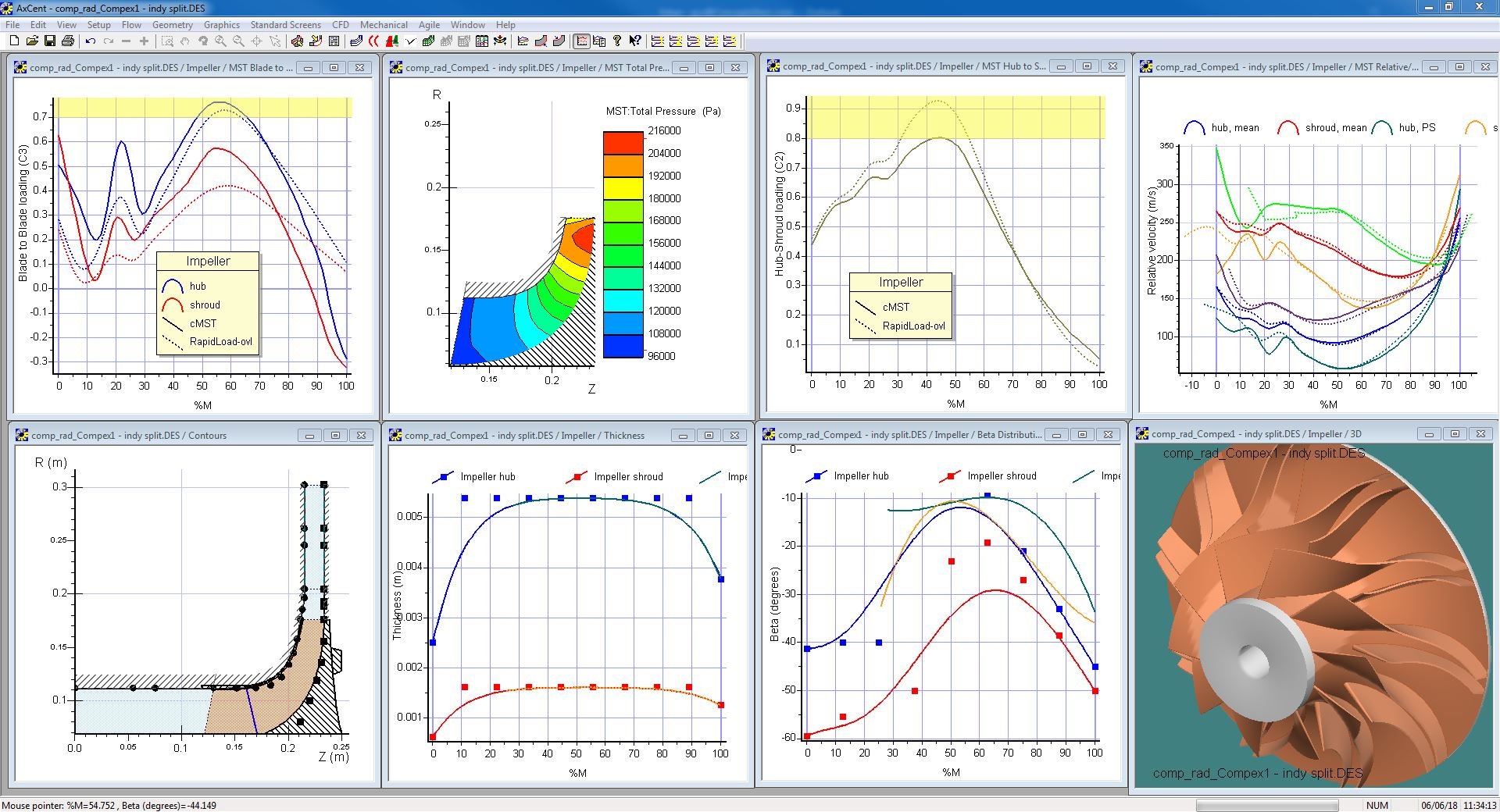
Design before editing
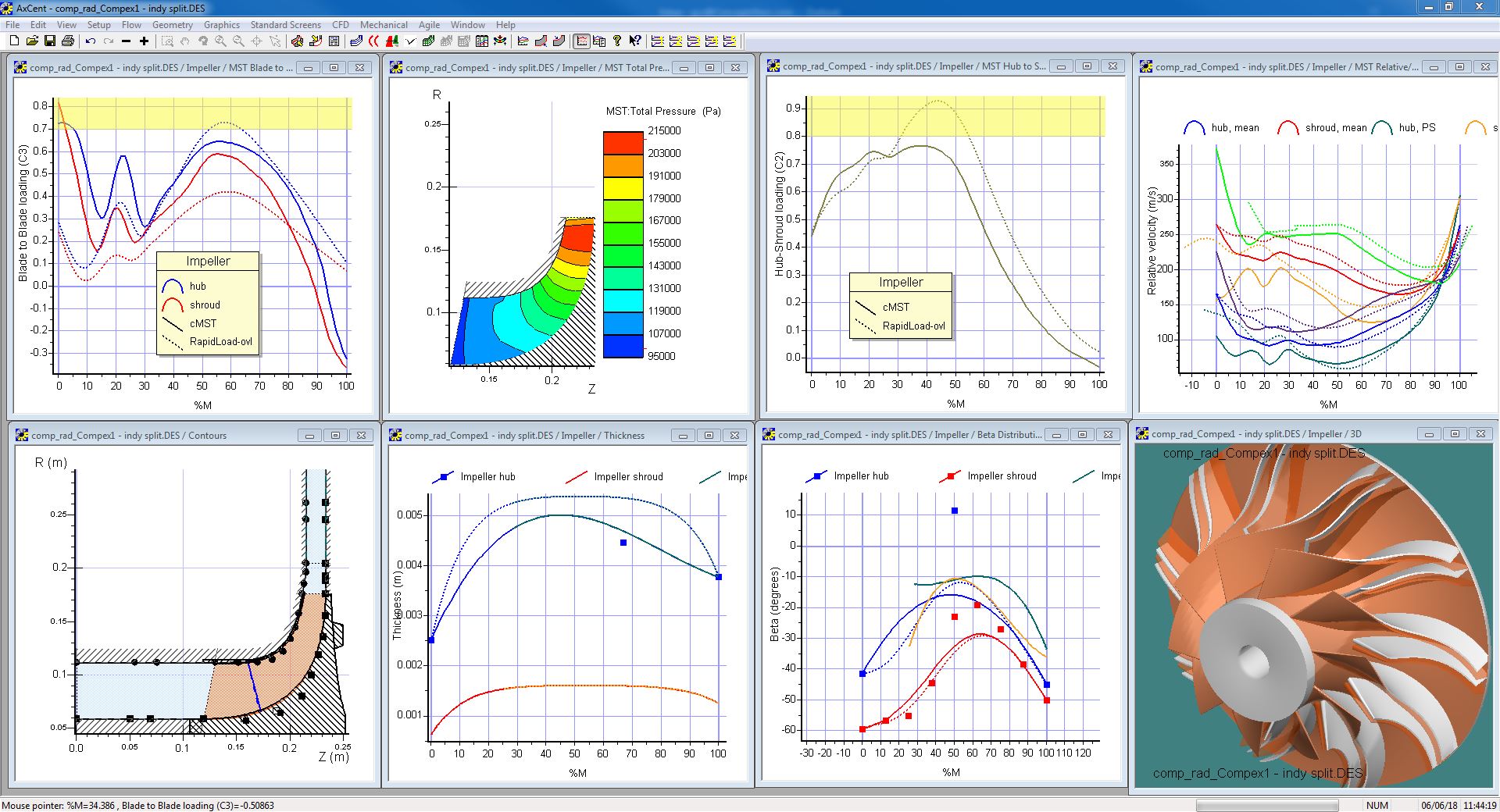 Design after editing
Design after editing
CFD Analysis
AxCent includes a number of CFD-based solvers:
- Blade-to-blade is a powerful and rapid quasi-3D solver for quickly evaluating flow patterns across the channel
- Quickly provides validated feedback to resolve blade profiles for twist, camber and thickness
- Throughflow is another quasi-3D solver for rapid analysis of axial streamwise flow in compressors and turbines using industry-standard loss and deviation models
- Enables feedback in minutes compared to full CFD analysis
- Run multiple iterations to improve performance
- Full 3D CFD with an advanced full Navier-Stokes solver for comprehensive analysis using a seamless one-click interface with Cadence/NUMECA's FINE®/Turbo
Four-stage axial compressor case study showing results from both Throughflow and Blade-to-Blade solvers:
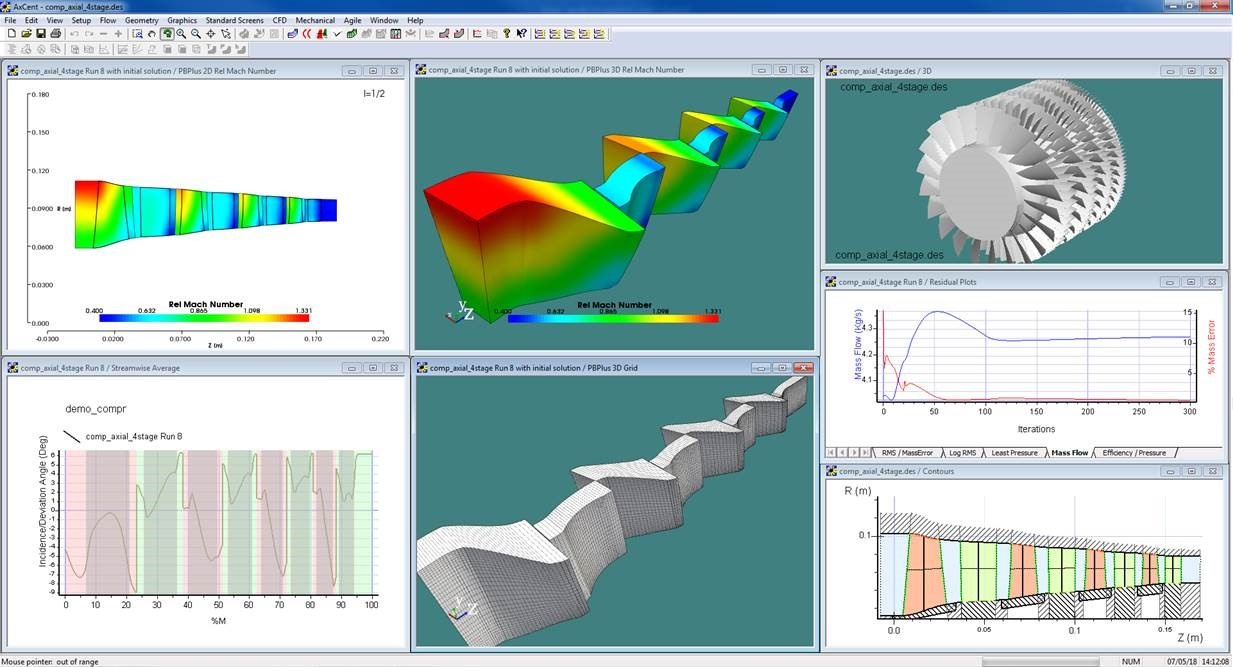
Throughflow ran in under 25 seconds - best for axial machines
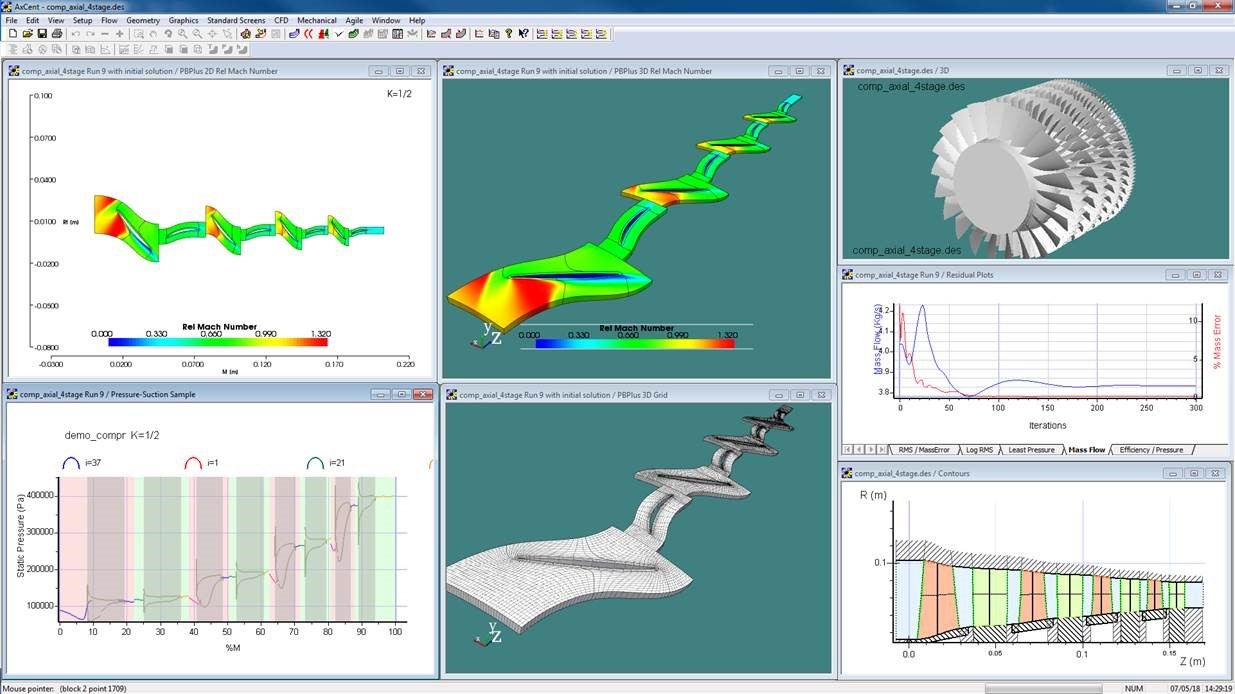
Blade-to-Blade ran in approximately one minute. It works on either axial or radial machines and runs fastest on radial machines.
Direct Integration to Other Programs
AxCent works through direct links with all Concepts NREC meanline programs including:
- COMPAL (radial compressors)
- PUMPAL (radial pumps)
- RITAL (radial turbines)
- FANPAL (axial and radial fans)
- AXIAL (axial and radial compressors and turbines)
- FINE/pbCFD and FINE™/Turbo (flow analysis)
- TurboOPT II (optimization)
AxCent can be started from any Concepts NREC meanline program (once the geometry has been set up), and can link the AxCent geometry back to the meanline design to rerun the analysis and regenerate the performance maps. Additionally, using TurboOPT II, the AxCent geometry can be linked to an internal optimizer or to a third-party optimizer such as modeFRONTIER, Isight™, VisualDOC, and IOSO.
Stress Analysis Integration
AxCent is fully integrated with Concepts NREC FEA stress analysis programs, Pushbutton FEA™. FEA stress, thermal and modal analysis can be conducted directly through the AxCent interface.
Interface to other Programs
AxCent is also compatible with many commercial and open source software packages. Some examples include:
- FLUENT®. Direct export of geometry or CFD grids through native FLUENT format files
- OpenFOAM®. Export of grid files and importation of output files through OpenFOAM formats
- CAD Systems. Export of IGES and STEP formats for seamless integration with virtually any CAD package
- Isight. Link to Isight optimization via XML format or directly through Concepts NREC’s TurboOPT IIoptimization software
- Import-export formats with Python scripting, XML format options, various other file output for seamless export to Concepts NREC CAM programs (the MAX-PAC suite)
Product Support

Customer-driven Improvement

Technical Support

Documentation
Dyrobes Brochure
Dyrobes™ is rotordynamics software based on Finite Element Analysis (FEA), it allows for multishaft designs and modeling of bearing housings and mix at continuous/discrete elements. The FEA technique also provides more accurate predictions of natural frequencies, forced response, and rotor stability.
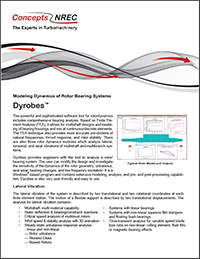
Find Your Rep
Our Sales Offices are strategically located around the globe to service all your turbomachinery needs.
Corporate Headquarters
217 Billings Farm Road
White River Junction, VT 05001-9486
Phone: 802-296-2321
Fax: 802-296-2325
Email: sales@conceptsnrec.com
North America Software Sales
Phone: 802-280-6181
Fax: 802-296-2325
Email: droberson@conceptsnrec.com
Upcoming Events
Tradeshows, Workshops, Webinars and more.
2021 Online Centrifugal and Axial Pumps Course - Modern Design, Performance, and Problem Solving
Application-Based Learning
Date: October 18 - 29, 2021
Time: 9:30 am - 1:00 pm EDT
Course Fee: $3500 USD
This course is designed to help engineers design, test, and run pumps and systems that are more efficient, more economical, and more reliable. Engineers will come to understand the best state-of-the-art design practices and learn the latest theories on performance, cavitation, dynamic forces, and noise. The course will review the latest advances in design tools and will provide expert and relevant instruction to designers on pump design optimization. Nearly half of all the teaching is focused on actual commercial design cases with measured data for confirmation.
2021 Trade Show: ComVac Asia
Visit Concepts NREC China at the ComVac Asia
Date: October 26-29, 2021
Location: Shanghai, China
To learn more, visit https://www.comvac-asia.com/index.php?lang=en
I came to the realization that we needed some objective insight.
We were working well with the OEM but even with our combined efforts, we were struggling to get a critical compressor to pass performance on their test stand. Although I'd never directly done business with Concepts NREC I was familiar with them and their capability so I chose to contact them when I came to the realization that we needed some objective insight. Concepts NREC fielded my cold call and immediately engaged their expertise in a complex problem that was also challenged by schedule constraints. They provided increased understanding of an already complex CFD which resulted in increased confidence that the proposed solution would succeed on the next test stand attempt (which it did!). We are pleased to have had the help of Concepts NREC and now have a well-performing compressor in our process.”
Bryan Barrington
Senior Advisor - Machinery Engineering

